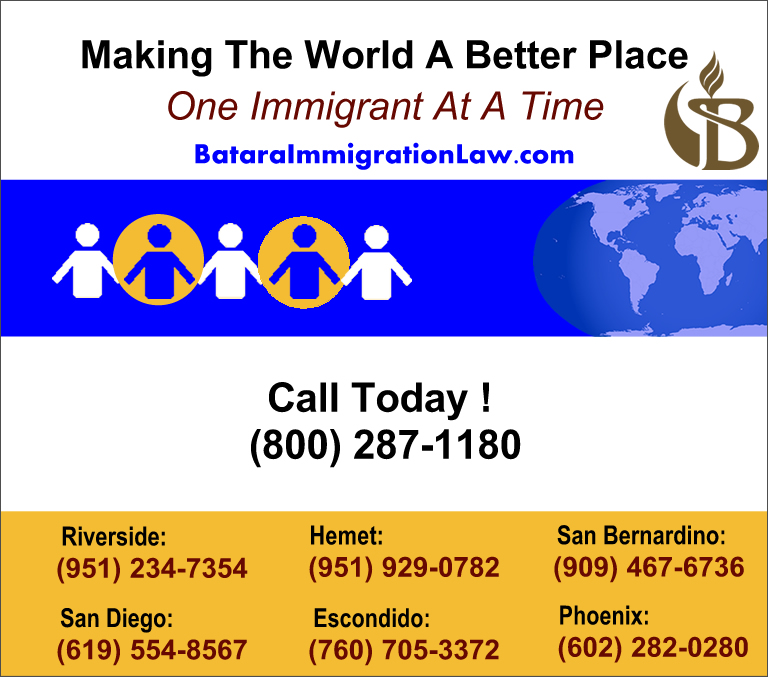
Editor’s Note: The most common consular processing cases involve marriage-based green card applications, in which a U.S. citizen or lawful permanent resident sponsors an immigrant spouse.
Although marriage green cards are the focus of the article, the procedures and issues discussed below pertain to other forms of green card applications – including children green cards, parent green cards, and sibling green cards.
Grasping the essential points of consular processing, in short, is often necessary to winning family-based permanent residence in the United States.
Table Of Contents
- What Is Consular Processing?
- What Are The Differences Between Consular Processing And Adjustment Of Status?
- How Does Consular Processing Work?
- What Are The Steps For A Green Card Through Consular Processing?
- When Do Consular Processing Applicants Need To File An I-601 Hardship Waiver?
- Conclusion

What Is Consular Processing?
Consular processing is the legal mechanism for seeking permanent residence through a U.S. Embassy or Consulate in the immigrant’s home country.
Under the procedures for consulate processing, immigrants are required to submit forms and documents to the Embassy or Consulate, and attend the green card interview there.
Consular processing is one of two procedures for obtaining a green card through family-based immigration.
If the immigrant lives outside the U.S., consular processing is the only path for immigrating to the United States.
The other path is known as adjustment of status.
What Are The Differences Between Consular Processing And Adjustment Of Status?
To qualify for adjustment of status, the immigrant must be present in the United States and have been admitted through a lawful entry or legally equivalent inspection. Adjustment of status interviews take place at a U.S. Citizenship and Immigration Services office near the immigrant’s residence.
On the other hand, if the green card applicant is living in the U.S. but does not meet the requirements for adjustment of status, he or she must also process their paperwork and attend their interview via the consular processing requirements.
Few immigrants are eligible for both adjustment of status and consular processing.
Yet, even when green card applicants qualify under both procedures, they are not allowed to seek both consular processing and adjustment of status, and must choose one option.
How Does Consular Processing Work?
- Petitioner files an I-130 immigrant relative visa petition with the United States Citizenship and Immigration Services (USCIS)
- Upon approval of the petition, the file is transferred to the National Visa Center (NVC) to begin processing with the Department of State
- The NVC will hold the petition until an immigrant visa is available. This happens when the priority date becomes current.
For immigrants classified as immediate relatives, such as the husbands and wives of U.S. citizens, there are an unlimited number of visas. This means visas are available immediately. As a result, for immediate relatives, the green card process usually takes only a few months to move to the next stage.
However, for immigrants whose cases fall under the family preference categories, such as spouses of permanent residents, there are limits on visas available per year. Hence, there are long waits, often taking several years, before the priority date becomes current and an immigrant visa is made available.
- When an immigrant visa is about to become available, the NVC notifies the petitioner and requests the payment of government processing fees and the immigrant spouse beneficiary’s visa application with supporting documents
- The NVC requests the petitioner’s Affidavit of Support to demonstrate that he or she can financially support the immigrant beneficiary without the need for public benefits
- After the NVC file is completed, it is transferred to the U.S. Embassy or Consulate nearest where the beneficiary resides and where the interview will be scheduled
- At the interview, if the immigrant visa is approved, the spouse beneficiary will be able to enter the U.S. as a lawful permanent resident
What Are The Steps For A Green Card Through Consular Processing?
Here is a consular processing flow chart:

When Do Consular Processing Applicants
Need To File An I-601 Hardship Waiver?
As noted above, some permanent residence seekers, living in the U.S., are required to seek a green card through consular processing.
Generally, if immigrants have resided in the United States without permission for more than 180 days, they must utilize the consular processing path to obtain legal residency.
This means they must return home for their green card interview.
However, they will not be allowed to return to the U.S. unless they file for an I-601 family unity hardship waiver, which, if granted, enables them to legally reenter the United States.
The need for waivers sometimes also arise for immigrants living outside the U.S. This happens most often in two different situations.
One, when a immigrant, living abroad, has unlawfully resided in the U.S. in the past.
Two, when he has violated some U.S. law, such as giving false information to a border officer when trying to enter the United States.
Because the stakes are so high in these situations, organizing, preparing, and winning an I-601 waiver is crucial.
Conclusion
Hopefully, with these five points in mind, you are equipped with the information needed to decide if you should proceed with consular processing, how to best proceed with consular proceeding – and whether you will need assistance to win a green card abroad.
Ready to take a serious and honest look at the strengths and weaknesses of your immigration case? Let’s get started with a personalized strategy and planning consultation . . .




